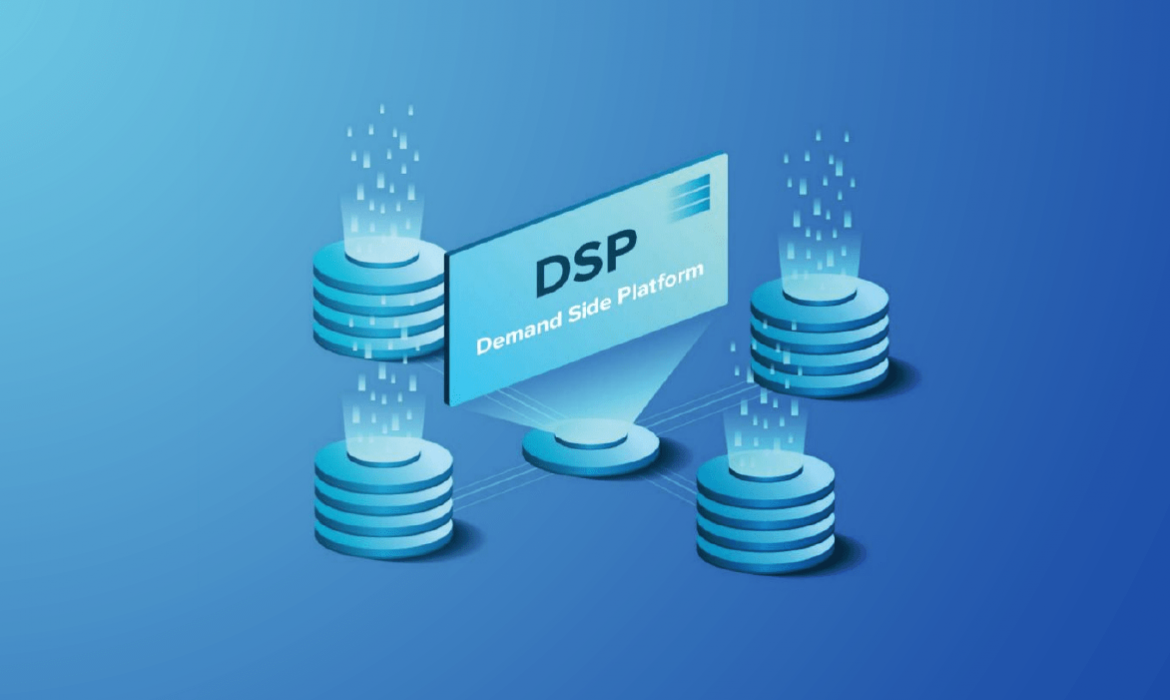Thanks to big data, the object of demand today is the target audience instead of advertising space itself. Thus, those advertisers who have access to the demand-side platform have access to the tool that makes this data work.
What is a Demand-side Platform?
DSP stands for Demand-Side Platform, a software that is used for programmatic ad buying, typically via bidding in RTB auctions. The purpose of the DSP is to buy the impressions on the suitable inventory and show them to the users that meet the target requirements for the optimal (minimum) price.
DSPs are commonly used by advertisers, in-house marketing teams, advertising agencies or Agency Trading Desks (ATDs). Utilizing DSPs, media buyers get access to multiple SSPs, Ad Exchanges, and Ad Networks through a single interface, allowing them to purchase rich media, video, mobile, and native ads in real-time. The process of buying inventory is performed automatically within seconds making the trading less time-consuming and much more profitable.
DSPs are the flip side of SSPs (Supply-Side Platforms). SSP is a technological platform that represents the interests of the publisher and sells advertising inventory. The DSPs transmit the bids from advertisers along with inventory requirements to SSPs. When the winner of the RTB auction is defined, taking into account the interests of both parties (advertiser and publisher).
Why do media buyers use DSP in advertising?
1.Global Reach and Integration
Most of DSPs integrate with RTB Exchanges; however, some of them provide access to premium or high-class inventory while others don’t. Some DSPs are connected to global Ad Exchanges, whereas others start partnerships with local premium publishers only.
Almost all DSPs give access to a range of inventory worldwide on the desktop and mobile screens and allow media buying in multiple currencies. When choosing a DSP, it is important to find out beforehand what traffic verticals and ad formats the DSP supports.
2. Effective Targeting
Demand-side platform definition would be incomplete without targeting. Precisely this function utilizes the user data to make the message as relevant as possible to the viewers.
DSPs can target:
- according to the context (targeting specific URLs based on the topic of the page);
- according to the geolocation, county, city, time zone;
- according to the browsing behavior;
- according to the gender, marital status, income, level of education;
- according to the device (desktop, mobile, tablet);
- according to the language, etc.
Such options as frequency capping (how often the same ad appears in front of the same user), dayparting (which part of the day) make advertising even more individualized. The cookie-level retargeting will help to find the users who once visited your website but didn’t convert and remind them about the offer. Each RTB DSP platform may use different kinds of data, like unique first-party data or third-party data collected from DMPs (Data Management Platform). DSPs may integrate with DMPs, this way they access additional audience data essential for campaign optimization and retargeting.
Some DSPs focus mainly on CRM data, whereas others only on the mobile data. Hence, before choosing a DSP, it is crucial to find out what data your DSP offers, on which segments and how big is the reach for those segments.
3. Right Inventory and Brand Safety
The first thing that determines the success of RTB campaigns is the inventory choice. Since DSP platform allows to pre-define the type of inventory for purchasing it’s easier to aim for success. For instance, in-app ads typically have higher engagement rates than mobile or desktop. Knowing such fact, the brand that strives to raise engagement can choose to serve impressions only in apps.
Another example, the brand wants to promote the new mobile game. The logical step will be showing the creative in other apps since the product is not working on the desktop.
As for brand safety: adding some of the applications to the whitelist, the advertiser can shorten the inventory selection period, immediately posting on the sites with the highest performance. The blacklist, on the contrary, can eliminate the inefficient inventory or block fraudulent or potentially harmful sources for the safety of your brand’s image.
4. Reporting and Campaign Analytics
Demand-side platforms allow advertisers to track the performance of their ad campaigns in real-time. Most of DSPs offer granular statistical reporting on click-through rate, website traffic, page view, engagement rates, and more.
Regardless of the fact, that the ad campaign runs across different Ad Exchanges at the same time, a DSP gathers information from all sources. After this, it delivers it as a consolidated custom report. Reporting helps to see what works and what doesn’t and to define a strategy for future campaigns more effectively.
5. Minimal budget
DSP advertising allows small and medium brands to launch and customize their advertising campaigns. This move reduces the extra costs typically consumed by third-party service providers. Most DSPs make it possible to start a campaign having a couple of hundred dollars on personal balance.
It’s worth to notice that every Demand-Side Platform has own pricing model. DSPs work on CPM, CPA, CPE, CPI or a CPC basis, each of which has own specifics of calculation. As a rule, CPM (cost per mille) is one of the most widespread of them. In such model, the payment is counted per thousand impressions.
Since DSP platform is bidding each time on the different impression, the payment is distributed evenly, after each impression served, not 1000 impressions at once. The auctions run according to second-price auction. The winning bidder pays the second highest bid for inventory plus $0.01, (not the actual highest winning price).
The critical thing to remember is, the pricing models featured above do not contradict each other. Those are the parallel directions that can effectively complement and reinforce each other for the majority of programmatic media buying ad campaigns.




